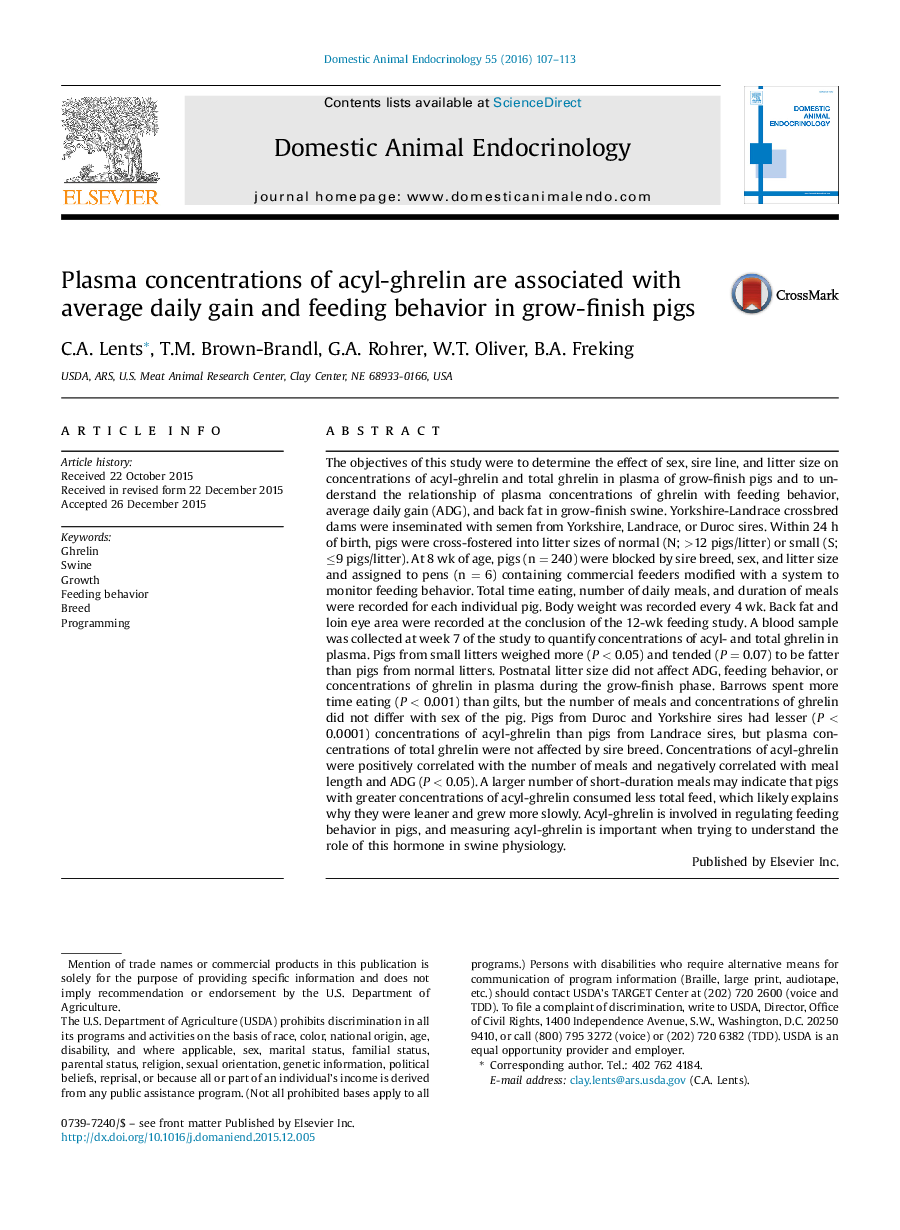| Article ID | Journal | Published Year | Pages | File Type |
|---|---|---|---|---|
| 8482087 | Domestic Animal Endocrinology | 2016 | 7 Pages |
Abstract
The objectives of this study were to determine the effect of sex, sire line, and litter size on concentrations of acyl-ghrelin and total ghrelin in plasma of grow-finish pigs and to understand the relationship of plasma concentrations of ghrelin with feeding behavior, average daily gain (ADG), and back fat in grow-finish swine. Yorkshire-Landrace crossbred dams were inseminated with semen from Yorkshire, Landrace, or Duroc sires. Within 24 h of birth, pigs were cross-fostered into litter sizes of normal (N; >12 pigs/litter) or small (S; â¤9 pigs/litter). At 8 wk of age, pigs (n = 240) were blocked by sire breed, sex, and litter size and assigned to pens (n = 6) containing commercial feeders modified with a system to monitor feeding behavior. Total time eating, number of daily meals, and duration of meals were recorded for each individual pig. Body weight was recorded every 4 wk. Back fat and loin eye area were recorded at the conclusion of the 12-wk feeding study. A blood sample was collected at week 7 of the study to quantify concentrations of acyl- and total ghrelin in plasma. Pigs from small litters weighed more (P < 0.05) and tended (P = 0.07) to be fatter than pigs from normal litters. Postnatal litter size did not affect ADG, feeding behavior, or concentrations of ghrelin in plasma during the grow-finish phase. Barrows spent more time eating (P < 0.001) than gilts, but the number of meals and concentrations of ghrelin did not differ with sex of the pig. Pigs from Duroc and Yorkshire sires had lesser (P < 0.0001) concentrations of acyl-ghrelin than pigs from Landrace sires, but plasma concentrations of total ghrelin were not affected by sire breed. Concentrations of acyl-ghrelin were positively correlated with the number of meals and negatively correlated with meal length and ADG (P < 0.05). A larger number of short-duration meals may indicate that pigs with greater concentrations of acyl-ghrelin consumed less total feed, which likely explains why they were leaner and grew more slowly. Acyl-ghrelin is involved in regulating feeding behavior in pigs, and measuring acyl-ghrelin is important when trying to understand the role of this hormone in swine physiology.
Related Topics
Life Sciences
Agricultural and Biological Sciences
Animal Science and Zoology
Authors
C.A. Lents, T.M. Brown-Brandl, G.A. Rohrer, W.T. Oliver, B.A. Freking,
